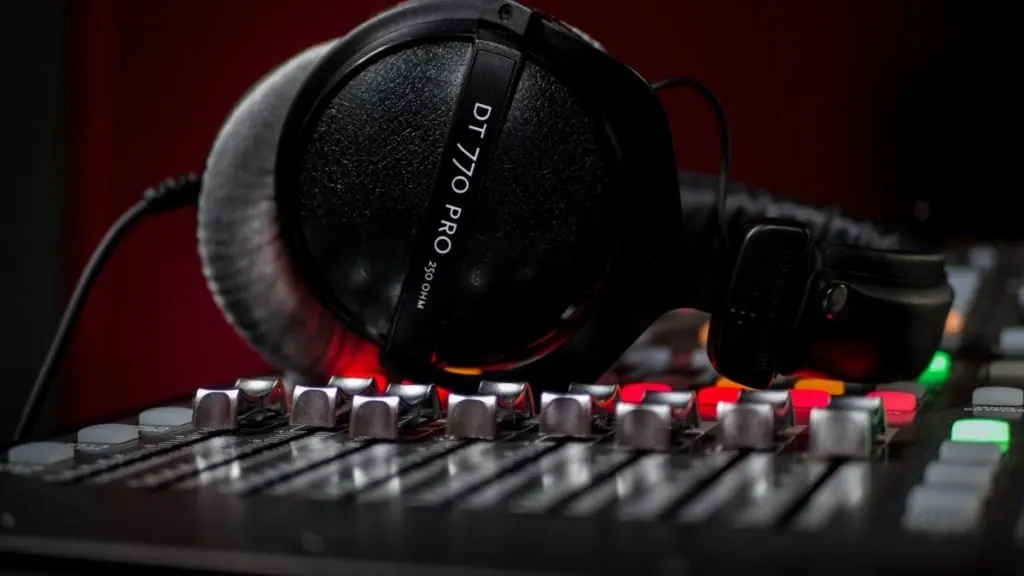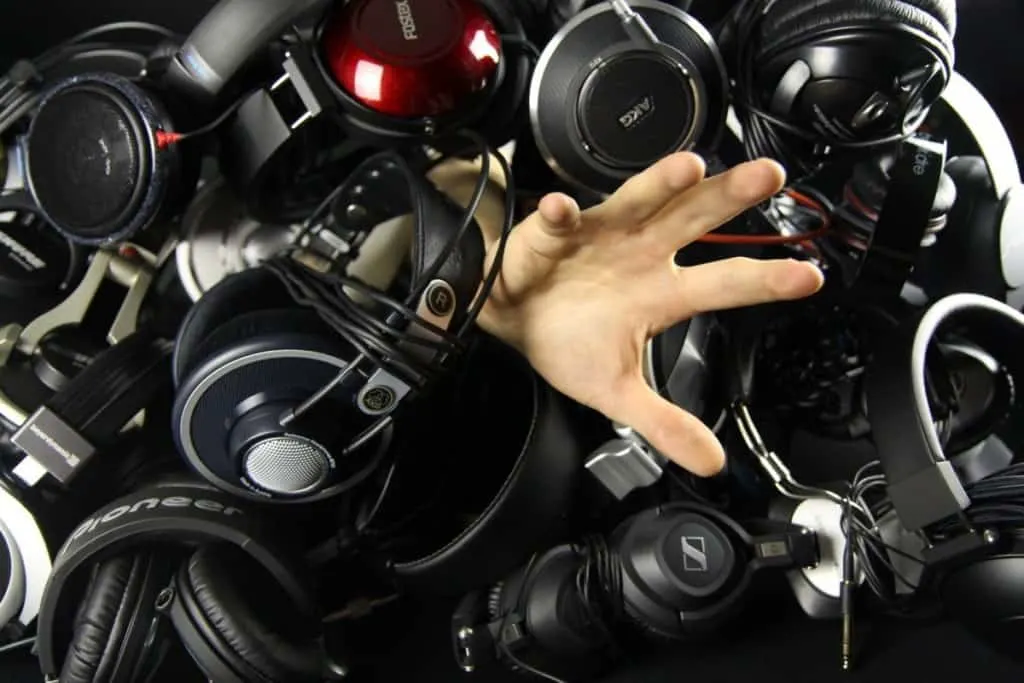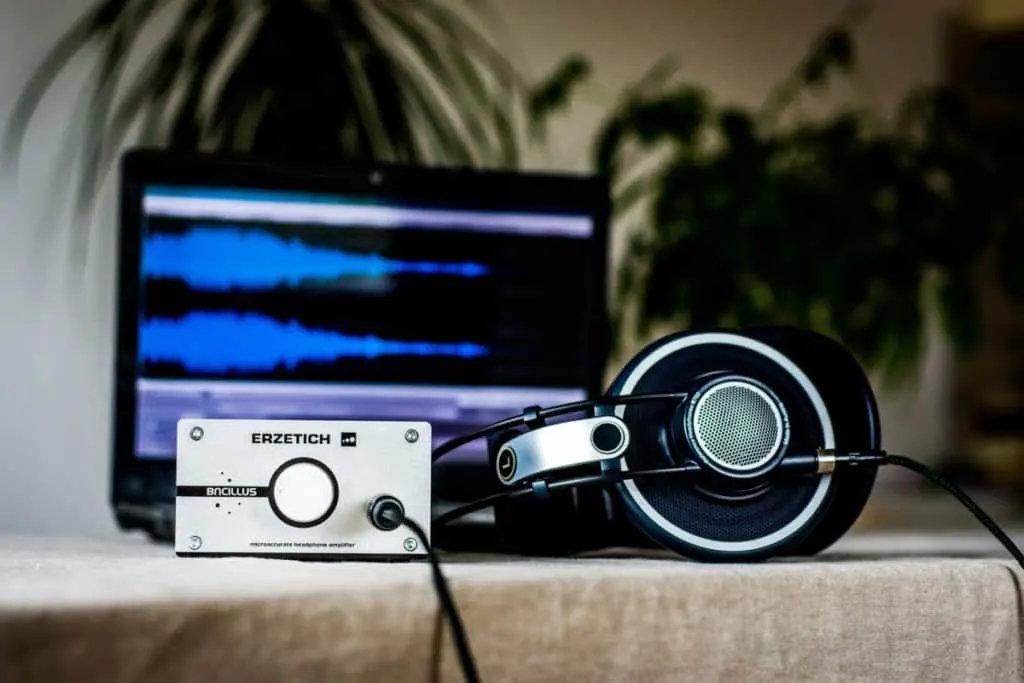Sometimes we are not able to use our state-of-the-art monitors to mix songs and need to do it with our headphones.
This might happen because you have annoying neighbors, tight family life, or any combination of issues that make your house an environment not suitable for high volume. Is your rig ready for you to mix an entire production only on headphones, or do you need a headphone amp? Well, that is the question we are about to answer in a few moments.
So, do you need a headphone amp for mixing?
You do not need a headphone amp for mixing but using a headphone amp brings extra clean headroom to any mixing situation. Headphone amps are a cheap and easy way to overhaul and enhance your current mixing setup. When mixing you will always benefit from using a headphone amp although one is not absolutely required.
That was the shortest answer I could come up with, but I have a lot more to tell you about the topic. Ready? Let’s do this.
Do You Need A Headphone Amp With Your Current Rig?
Let’s get started where you are right now. By this I mean your current setup, not your dream one. Let’s go through some questions that will help us narrow down your search.
What Headphones Are You Using For Mixing?
This is the first and most important question because everything starts with the headphones.
Are you using high-end headphones that are specific for music-making and audiophiles or just a random pair you use with your cellphone and all other devices? Furthermore, do you know the difference between them? Take a look at this video that explains impedance with different headphones.
This should be the area where you invest the heaviest part of your budget.
High-end headphones allow music-listeners to have a clearer grasp of the nuances in audio. If you are working with heavy-textured music or want to make decisions over the thin limit between the lows and mid lows of the bass and the kick drum, you need to be able to hear them. So, step one of this journey, if you are not using high-end headphones for mixing, you should get a pair of them.
If your budget allows. check out some new Beyerdynamic DT 1770 PRO or 880 headphones
You should get the 250-Ohm version given the choice, and I’ll explain why later on.
Check out the incredible Beyerdynamic DT1770 Pro here on Amazon.

What Kind Of Output Are You Plugging Your Headphones Into?
The second stop in this joyride to the core of the music is the input that those beautiful, new headphones will be plugged into. Different audio systems will support different types of headphones.
- Audio interfaces – Audio interfaces are, usually, more powerful than other audio equipment such as a cellphone or a regular music player. That being said, a good audio interface will power your headphones up to 80-100 ohms. Beyond that, they are going to struggle to feed them. You need a headphone amplifier.
- ·Straight to the computer – Some people make records at a studio and then mix the music with headphones at home. If that’s your case and you want to mix sitting in your living room wearing a robe and puffy slippers, that’s fine. The thing is that the output of your computer will not feed 250-ohm headphones; it´s prepared to feed up to 50-ohm headphones. You need a headphone amplifier.
If you just got 250-ohm headphones, and you notice you’re listening at a very low volume when you plug them in, you need a headphone amp.
What´s Your Headphone Budget?
If you are getting into the music world to just make music for yourself and have some fun, then it’s perfectly ok to use low-impedance, regular headphones for your productions. Chances are you are going to get enthusiastic about the results and will want to share them with more people and then you are going to begin to hear the gaps.
The way you listen to what you just recorded for mixing is just as crucial as the way you recorded it.
If your perception is not deep or flawed, you are going to waste a pile of hours mixing to achieve mediocre results at best. To prevent this from happening, invest wisely. Your headphones should be among the priorities along with the audio interface, microphone, and computer.
Add to those great headphones a cool headphone amp, like the ART ProAudio HeadAmp, you’ll have enhanced clean headroom allowing more volume with less distortion.
Check out the ART ProAudio HeadAmp here on Amazon
Let´s Talk Impedance
Now that you know the golden rule about impedance and audio quality, it’s time to explain to you how it works.
Impedance is a reference to the resistance that electric current encounters when flowing. The higher the number of sound components coming into the headphones, the larger that resistance will be. Once power or voltage is translated inside the headphone into vibration for the membrane, we hear the sound.
If the voltage comes across a path of resistors and capacitors, by the time it hits the membrane it has become too low to move it. On the opposite side, if the audio signal hits the amplifier that excites it, it will go through capacitors and resistors and sound loud & proud through the headphones because enough power will hit the membrane.
Although there are exceptions, you must know this golden rule of music professionals and audiophiles: larger impedance is always welcome. You need a headphone amp to power them, but you will hear music as never before and be able to make surgeon-like decisions over it.

Mixing On Headphones
Before the conclusion, I want to address the benefits of mixing on headphones and some tips you should know to maximize your time with the cans on your skull. Believe me that my life would have been much easier had I known all this info I’m including in this section.
I have written an article on how to mix without studio monitors. You can read it here.
Multiple References
This is my first piece of advice: have multiple references. I mean with this that you should mix on your headphones, but then play your music on many different devices (as many as possible) to double-check your headphone’s biases. For example, mono JBL GO Bluetooth speakers are very revealing.
Indeed, one of the things I learned using them is never to pan the voices in a song completely, otherwise, they will fade in and out of the mono mix. At the same time, if it sounds great in a mono setup, it’s going to be ripping in a stereo setup.
Take Regular Breaks
Hearing fatigue is a fact. We all get started in this business thinking that there is nothing that can stop us but nobody’s ears are made of titanium. The more you work with hearing fatigue, the more chances you have of having to redo your work the next day losing time twice.
Take regular breaks; I use the Pomodoro technique. I work 45 minutes non-stop and then take 15 minutes of break and then another 45 minutes and so on.
Get To Know Your Headphones
By this I mean you should listen to a lot of music through them before you start mixing.
Knowing exactly how good music sounds through them will give you an idea of how your mixes should sound by the time you’re done. It takes time, but you should, at least, listen to one of your favorite records of all time on them per day until you get familiar with how they sound.
In my case, for example, I can work wherever I want because I know my cans like the palm of my hand.
I didn’t have to have that awkward conversation with my wife about transforming a room into a studio because I do not need any kind of sound isolation to mix on my headphones. My neighbors doesn’t even know they live next door to an audio engineer!

Calibrate Your Headphones
Finally, this is something I learned about a very short time ago but it makes a lot of difference. Headphones, as much as studio monitors, can be calibrated. There is a company called Sonarworks that offers to sell either calibrated headphones or calibration for your pair.
Once they calibrate the headphones, they provide the customer with software that compensates hills and valleys in the frequency response of headphones making the response as flat as possible. The flatter the response, the fewer biases you’ll have when mixing.
Take a look at my article on the benefits of calibrated studio headphones. You can find it here.
Headphone Amp Mixing Conclusion
There are many benefits to mixing on headphones and using a headphone amp. They allow more freedom and you can dissect music to go much deeper than with monitors. Fixing little details like delay, repeats, or reverb makes having professional, flat, headphones a must.
These headphones require more power because of their higher impedance. This is when a headphone amp becomes an important piece of gear your rig will always benefit from.
Listen to your music loud and clear while the high-impedance headphones allow you to go deep into each sound layer. Remember that the more you can control in your productions the better they will be. Create a good reputation one good mix at a time and let time work in your favor.
Happy (silent) music mixing!
